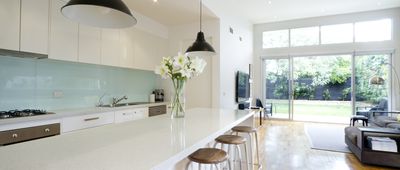Living with Less
Go small, or go home. Downsizing your life is a hard decision, but where you choose to live can make it much more attainable. Living in a city that supports "urban minimalism" can offer the chance to make do with less while still having plenty of amenities. The rental listing service RentCafe took a look at what cities offer the best opportunities for living smaller. The ranking was based on these factors, amongst others: home size, because living in a smaller home means owning less; electricity bill as an indicator of natural resource use, and eco-friendly practices like biking, walking to work, and working from home. Here's where to go to live with less.
Related: Mistakes to Avoid When Downsizing Your Home



















